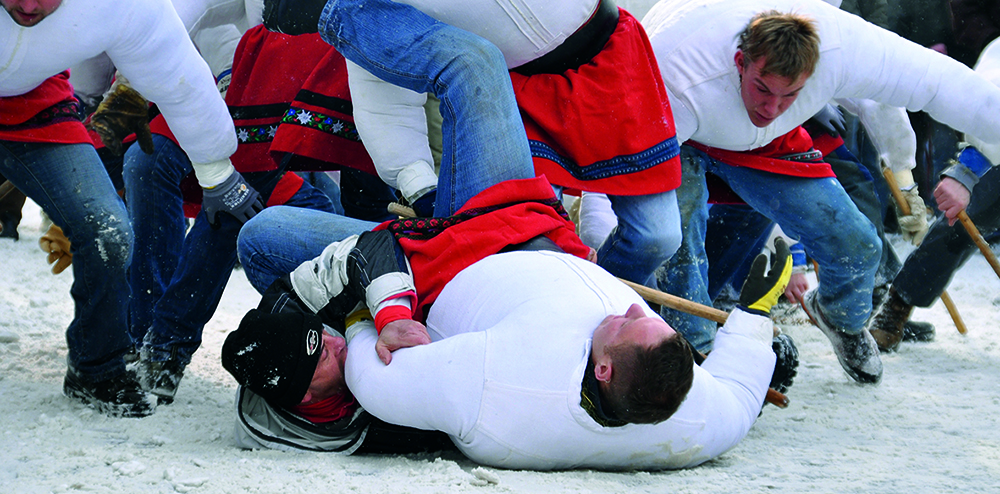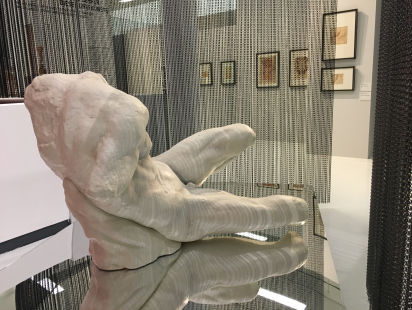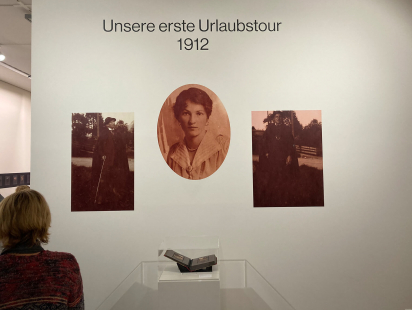The ram (and all hell!) has been let loose!
And numerous other figures are out to wreak a bit of havoc during the ‘Fasnacht’ carnival parade on 4th February 2016. The Axamer Wampelerreiten (literally ‘riding of the Wampelers’ their name alluding to their fat bellies!), is a Fasnacht tradition that takes place in Axams near Innsbruck. Each of the figures, role-played by locals, has a symbolic significance. A rider (Reiter) has to try to throw himself onto the back of the fat-bellied ‘Wampeler’ symbolising the battle between the departing winter and the coming spring. Many other figures are also present, and each one has a different significance (translated from German).
The spectacular parade takes place every year on ‘Fat Thursday’, the last Thursday before lent. “For the locals this is one of the most important days of the year,” explains Patrick Auer, ‘Wampeler’ father and one of the organisers of Axams’ Fasnacht parade. But now let’s take a look at the different figures:
Wampeler, Wampe = fat belly
This figure represents the winter – strong, powerful and formidable. The ‘Wampeler’ wears a rough, white linen shirt (Pfoad) which is stuffed with hay from the second cutting (Grummet). “The large amount of hay makes it difficult for him to move but, at the same time, it protects him from injury when he falls,” explains Patrick. Those ‘Wampelers’ taking part are stuffed with hay by formers ‘Wampelers’. “The older ones help the younger ones.” In addition, the ‘Wampeler’ wears a broad leather belt, a red skirt over his trousers, sturdy boots and he carries a stick in his hand. His traditional, carved wooden mask (Larve) carries a serious expression and his head is covered with a fur hat. “The masks are carved by several local sculptors and wood carvers.”

Wamppeler. Photo: Fasnacht Carnival Association, Axams
Tuxer
The most attractive figure in the Axams’ Fasnacht procession wears a mask depicting a strong, handsome young man. The ‘Tuxer’, as he is called, wears fine silk scarves, ribbons and bows. His figure represents both spring and youth which are symbolised by his lady’s hat (Fügner) adorned with flowers and feathers. In addition he wears two traditional, Alpine-style aprons and he carries a whip which he cracks loudly and uses to capture pretty girls to dance with.

Tuxer. Photo: Fasnacht Carnival Association, Axams
Flitscheler
The ‘Flitscheler’, who symbolises fertility, wears his suit inside out – i.e. with the seams and lining on the outside. Dried leaves from corn cobs (Flitschen) are sewn onto his jacket. Each costume needs around 120 corn cobs. The cobs are knotted together in bundles of 4, each a so-called ‘Flitsche’. The costume comprises a total of 30 ‘Flitschen’ as well as a wooden mask, mittens and a branch from a spruce tree. The role of the ‘Flitscheler’ was first created by Peter Flitscheler in 1957 who died as the result of an accident.

Flitscheler. Photo: Fasnacht Carnival Association, Axams
Axams’ witches – ‘Nadeln’
Witches are represented in almost all Fasnacht carnival traditions in Tyrol. One variation of the witches are the so-called ‘Nadeln’, the grandma’s of the Fasnacht tradition. Instead of a witch’s broom, they carry a walking stick (Hoagiler). Despite their comical appearance and the softer features of their face masks as opposed to those of the witches, they conduct themselves in a grumpy, bad-tempered manner. In addition, they wear shawls and silk aprons, unlike the witches who wrap themselves up in blankets.

Witches. Photo: Fasnacht Carnival Association, Axams

Nadel. Photo: Fasnacht Carnival Association, Axams
Buijazzl
The name ‘Buijazzl’ derives from the Italian word ‘Bajazzo’ meaning clown or jester. The nimble comedian brings merriment and high spirits to the parade. His clothes are bright and colourful and, with bells on his neckpiece and an eccentric hat, he attracts attention to himself and the other Fasnacht figures by performing cartwheels and exuberantly jumping around. His mask is similar to that of the ‘Tuxer’, except that that the eyes are different and the hair is carved into the mask. The ‘Buijazzl’ can sometimes be seen with teeth and a moustache.

Buijazzl. Photo: Fasnacht Carnival Association, Axams
Old Bavarian Couple
The Bavarian couple symbolises harmony between men and women. Her traditional costume comprises a fine, black shawl, a valuable silk apron (Fürschtiger) and a special traditional hat (Stotzn). The man wears a suit with a traditional waistcoat, shirt, tie and hat. The couple follows the Fasnacht procession slowly and sedately, stopping to dance waltzes and polkas along the way.

Old Bavarian Couple. Photo: Fasnacht Carnival Association, Axams
Bear and bear handler
These figures represent the battle between summer and winter. By growling loudly the bear announces the coming of the spring. The bear handler, who symbolises winter, tries to capture him and tie him up with a rope.

Bears: Photo: Fasnacht Carnival Association, Axams
Axamer Bock
For those of you who have read this far, your reward is the ‘Axamer Bock’ (goat) – the main emblem of Axams’ Fasnacht carnival and name-giver of the Fasnacht magazine. In a poem written by Franz Jordan, a certain Franz Melcher believes that a billy goat is Satan himself – so the legend goes, anyway. The animal, admittedly, does have a bit of a devilish look in its eye. And it smells rather bad as well. The author of the poem lived in Axams between 1774 and 1828 and was, himself, a witness every year to the Fasnacht celebrations of the time. The poem is always recited at the grand carnival parade, which takes place every four years. Today a goat carved out of stone and set on the village square opposite the church serves as a reminder of the famous legend.

Axamer Bock: Fasnacht Carnival Association, Axams
Fancy a taste of a traditional, authentic Innsbruck/Tyrolean custom? Then pluck up a bit of courage and visit the Axamer Fasnacht parade. The witches won’t hurt you, neither will the goat…Honestly!
Coordinates:
Fasnacht carnival parade with ‘Wampelerreiten’
Sunday, 04.02.2016, Axams village square, from 1 pm onwards, come rain or come shine!














